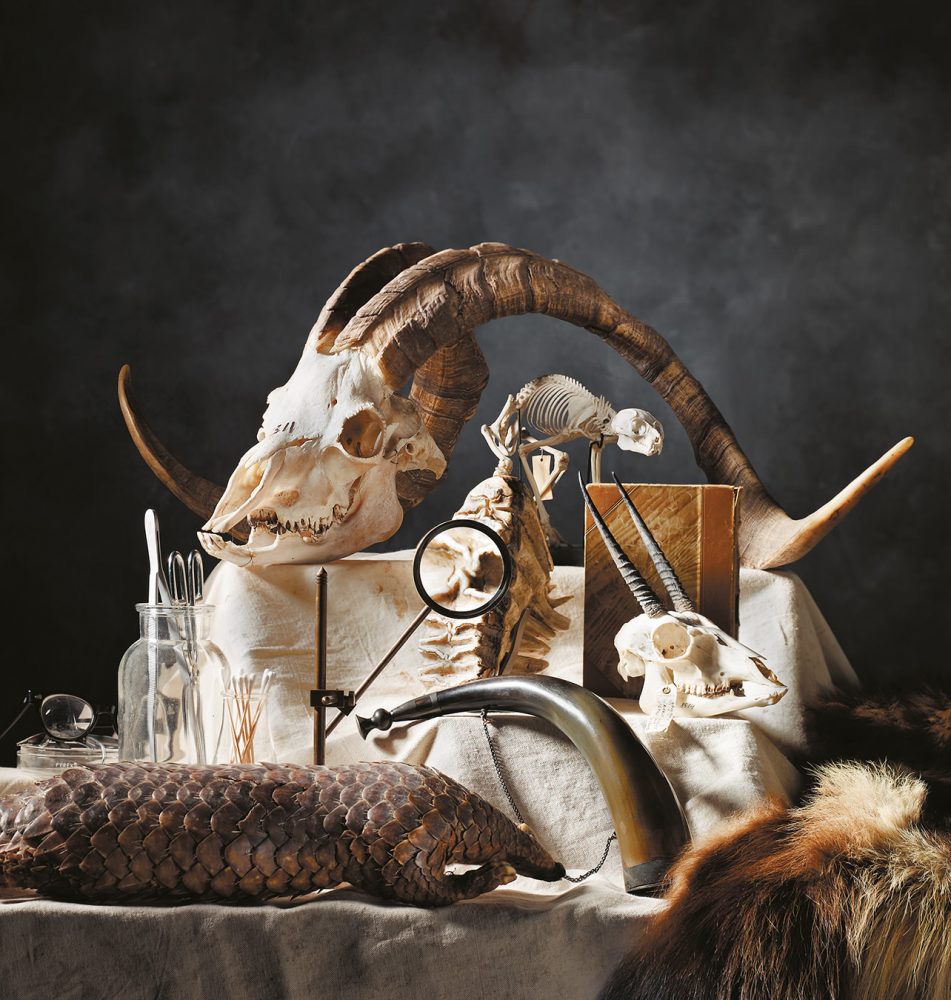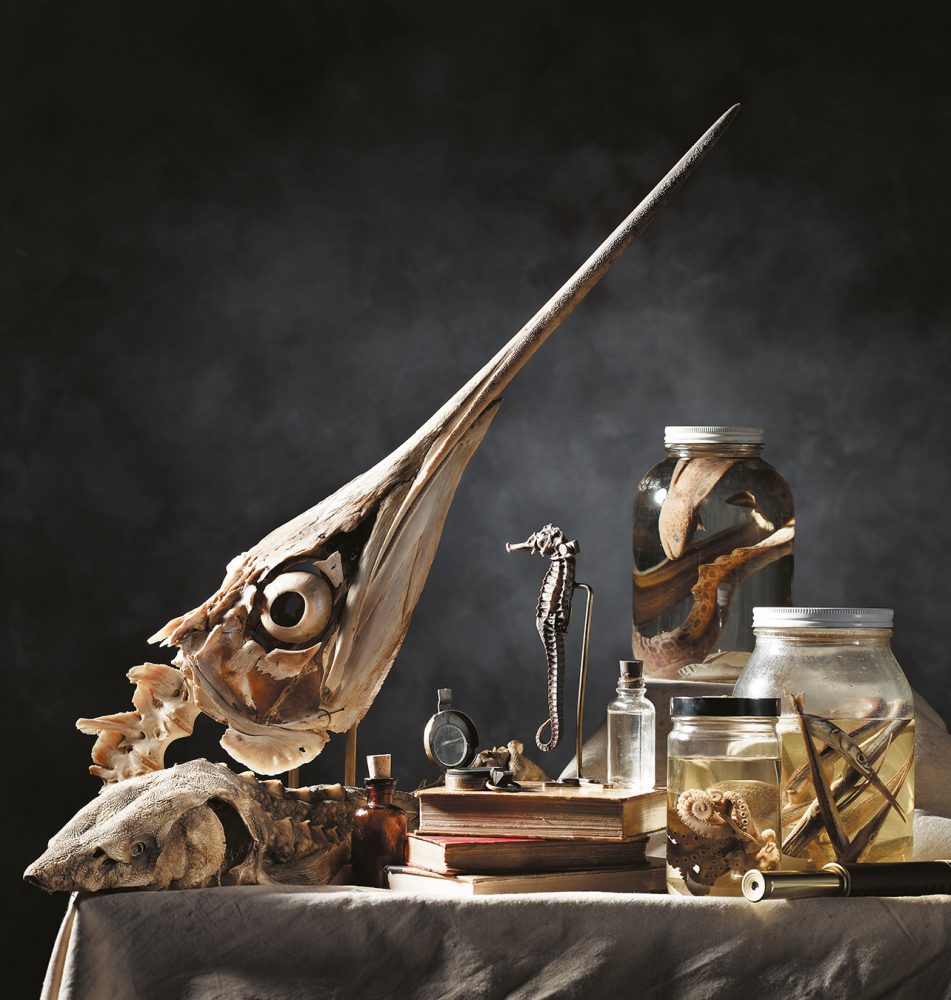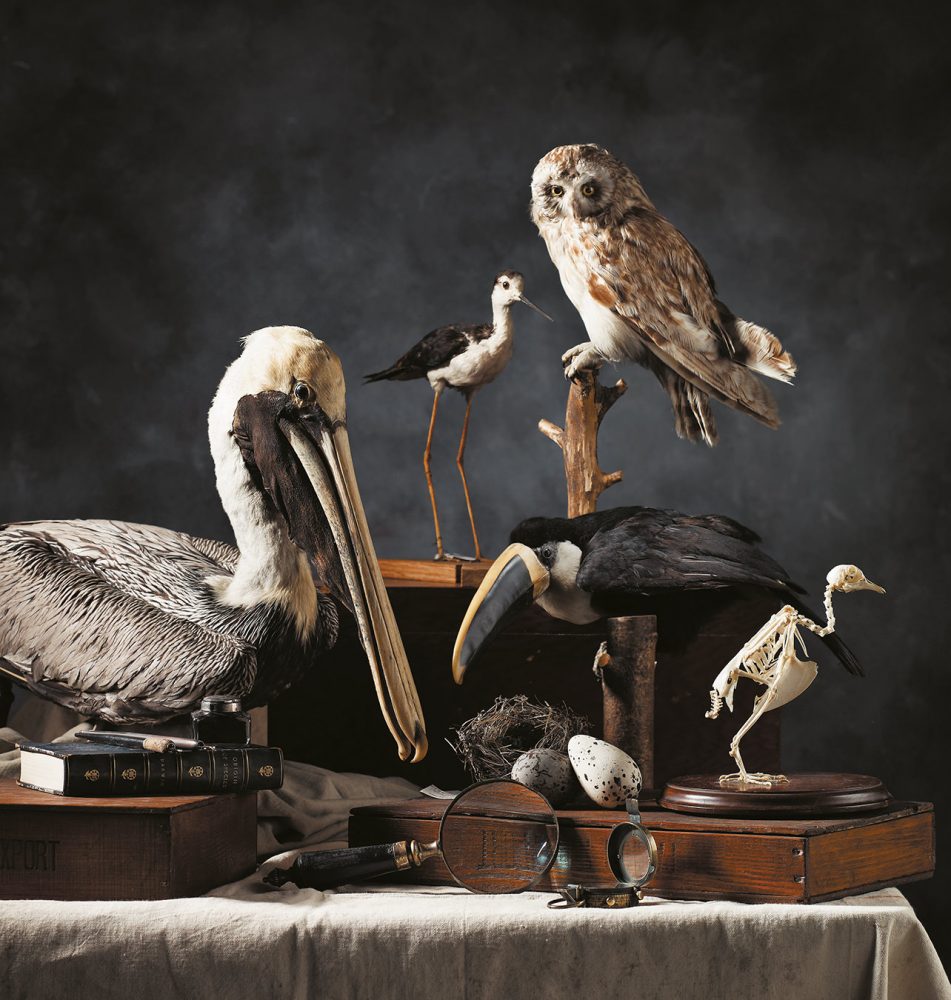Hundreds of students pass hurriedly down the University of British Columbia’s Main Mall between classes everyday, but even in the midst of midterms, many of them are brought to a standstill as they marvel in the scientific masterpiece before them. Inside a glass atrium, a massive articulated blue whale skeleton, all 85-feet long, dangles at eye level. Suspended from above, the leviathan creature is unbelievable. “It’s the largest blue whale skeleton on display in Canada,” says Rachel Poliquin, as she pushes open the glass doors to the Beaty Biodiversity Museum. Poliquin is one of the museum’s exhibit designers, and her eyes light up when she remembers the museum discovering that the skeleton fit perfectly in the atrium. “The building had already been built—it was amazing to see how well it fit into this space. It was like it was meant to be.”
From the main entrance, a long ramp descends below the belly of the whale to the museum gallery. The walls are peppered with photographs of magnified microorganisms, the smallest forms of life on earth. All that transpires between these walls is perfectly summed up in those first few moments of entering the building—it is the study of the variety and distribution of life on earth, from the microscopic to the macroscopic. The museum is home to over two million specimens between six collections—the Herbarium; the Fish Museum; the Cowan Vertebrate Collection; the Spencer Entomological Collection; the Marine Invertebrate Collection; and the Fossil Collection—each of which were started individually decades ago.
“I think what makes us most unique and unusual is that this is not a typical natural history museum—we are a live research collection,” Poliquin explains, as she passes though the public gallery into the UBC Biodiversity Research Centre, an expansive four floors of offices and research laboratories. Visitors walking through the airy space can hear conversation and laughter amid the hush of research in progress. “Before we moved in here, the research collections were scattered and separated all over UBC,” Jeannette Whitton, director of the Herbarium, recalls. “For example, our fossil collection was stored on the south campus, which is a 20-minute walk away.” With the construction of this new research centre—designed to promote open learning with windowed lab doors and expansive study tables—researchers from every imaginable department are working side-by-side for the first time in decades. “We have everyone from microbiologists to mushroom researchers and botanists to zebra experts all together. It’s fantastic,” Whitton says with a grin.
Jars of large, bug-eyed fish floating in a liquid preserve; a skull the size of a pinky fingernail; a beetle as large as a child’s palm—these are but a few of the visual delights the museum offers.
In the beginning there was no plan for a museum. The goal was simply to build a space that would belong entirely to biodiversity researchers and their study. Funding to support the Biodiversity Centre and museum came from university, government and private sources, including a grant from the Canada Foundation for Innovation and a generous $8-million donation from geologist and mining entrepreneur Ross Beaty and his wife Tricia, both UBC alumni. It was the Beatys’ suggestion to make the collections available for public viewing that ultimately sealed the fate of the museum. Whitton adds that as the vision became more concrete, the scale of the plans also grew.
Back inside the gallery, rows upon rows of dark paneled walls hold a variety of built-in shadow boxes and cabinet window displays. Lit from within, the cases glow with ambient light, illuminating the research inside. Jars of large, bug-eyed fish floating in a liquid preserve; a skull the size of a pinky fingernail; a beetle as large as a child’s palm—these are but a few of the visual delights the museum offers. It is a sacred place, where the light is kept deliberately low to protect the specimens. “There are concerns about deterioration,” explains Eve Rickert, the museum’s acting director of exhibits and outreach, elaborating that “the shadow box cabinets are kept air-tight to protect against pests and moisture damage.” Researchers, however, can access their work at any time with a special key that opens both the display case and the hidden compartments holding the multitude of research specimens within them.
Meanwhile, Poliquin notices a conch shell has gone missing from one of the displays. A small card sits in its place, explaining that the item has been borrowed for research purposes and will be returned soon. “These cards are there to benefit visitors who are wondering about the empty spot, and to the other researchers to provide peace of mind that nothing is accidentally missing,” she points out. And that concern is a very real one. The biodiversity museum is a dynamic space where display contents are removed, replaced, and changed regularly, reflecting current research.
Whitton points out that researchers tend to have a pack-rat mentality, and that their research collections tend to grow rather than shrink. “You don’t know what you might want tomorrow, five years from now, or 100 years from now,” she says. “Specimens never get thrown away because there is a belief that they will be valuable in the future. For a number of years, DNA can be extracted from organisms that are preserved. If you throw them away, that possibility is lost forever.” With this DNA, researchers in the museum have discovered the existence of multiple species and the probable extinction of others.
“Specimens never get thrown away because there is a belief that they will be valuable in the future. For a number of years, DNA can be extracted from organisms that are preserved.”
In light of the museum’s magnitude, Poliquin, a writer, curator and expert in the history of taxidermy, was brought in to create the tetrapod and fish displays. (“Tetrapod is just a fancy way of saying four-legged creature,” she explains. “Birds, beasts, amphibians and reptiles.”) But there are also drawer display cases and excavation displays. “The excavation displays are all fossils and they sit under the floor with glass over top. Basically, you can walk right over them, which is a fun and appropriate for what they show off.”
In less than six months Poliquin designed nearly 200 window displays and wrote the accompanying descriptors. She remembers when she was first given the task of describing each item on a small card in only 70 words or less. “At first, I thought it would be impossible. Then I got better at it. Now I realize you can tell a great little story in 70 words.”
With hundreds of specimens to make sense of, Poliquin took a linear approach, first asking the basics like “What is a fish?” and “Why are there so many fish?” then on to stories of endangered species and genetic testing. “People will gravitate to what they are interested in and will hopefully find their own narrative within this labyrinth of exhibits,” she says.
The museum has been officially open since October 2010 and Whitton and her colleagues feel blessed to have a place that showcases their work. “The real richness of this building is not in the bricks and mortar,” Whitton says. “It’s the bringing together of people. The ideas that flow up and down the hallways are almost palpable. As researchers, we want to change and impact the world. This building allows us to do that as individuals with differing strengths in a collective space. The museum takes it one step further. The staff—curators, writers, and so on—take what we do and translate it for the public,” she explains. “They show the researchers the potential of our own stories. To know that we can impact people’s understanding of the planet this way? That is stunning.”
Art Direction: Mark Reynolds.
Production: Craig David Long, Amanda Jun, Rachel Poliquin.
Photographer’s Assistant: Makito Inomata.











